Review: Microsoft's Windows Phone 8.1
Apr 14, 2014, 7:00 AM by Eric M. Zeman
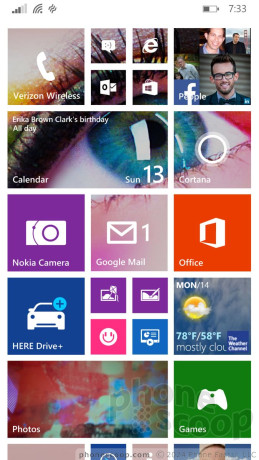
Microsoft delivers a solid update to is smartphone platform with Windows Phone 8.1. The new features are genuinely delightful and bring Windows Phone up to speed with Android and iOS ... almost. Here is Phone Scoop's full review.
Intro
Intro
Microsoft promised to deliver Windows Phone 8.1 to most devices by summer. Believe us when we say: This is one update you're really going to want.
The name "Windows Phone 8.1" suggest this is a minor update to Windows Phone 8. It's not. Microsoft added a lot of features to Windows Phone that provide users with instant gratification. The company also made tweaks under the hood that will really pay off further down the road. The basic look and feel of Windows Phone 8.1 is familiar, despite the advancements to usability and usefulness. Now more than ever, Microsoft's mobile operating system offers feature parity with Android and iOS.
Unlike when it upgraded from Windows Phone 7.5 to Windows Phone 8, the jump from WP8 to WP8.1 won't break app compatibility. Also, it's being offered to all devices already running WP8. Microsoft has made a solid commitment to its customers. That's commendable, and goes further than what Google and its manufacturing partners are able to promise Android device owners.
We've spent about a week putting Windows Phone 8.1 through its paces on a Nokia Lumia Icon. Here are our thoughts so far.
UI Basics
Design
If there's one thing Microsoft has succeeded at in recent years, it's keeping the user interface and overall appearance of Windows Phone consistent. In fact, the WP user interface (which debuted in 2010) was later pushed to Microsoft's desktop operating system and is also now found in the XBox. The interface makes use of square or rectangular Live Tiles, which are apps/services running on the Start screen. Many of them are interactive, or refresh regularly with new content. They are sort of like miniature widgets. Windows Phone 8.1 doesn't change this basic idea. The appearance and functionality of the Live Tiles has been carried over. The Live Tiles are colorful, and arranging them on the Start screen can be rewarding in its own way. It's sort of like creating your own, custom puzzle.
The same is true of the main app menu and most of the baked-in applications. They retain the look they've had practically since day one with only slight changes here and there. That means you have a lot of black and white, with columns of apps and lists of settings. It is a fully modern-looking operating system that is unabashedly "Microsoft." It is dramatically different from Android and iOS, and I think that's a good thing. It helps Windows Phone stand apart and (mostly) prevents it from following a "me-too" script that otherwise might have it stealing from the competition.
There's nothing warm and fuzzy about Windows Phone, but I find it easy to like and use.
While Microsoft may not have changed the general design of Windows Phone, Microsoft has made a wide range of changes to the behavior of the home screen and various other aspects of the user interface.
Lock Screen / Action Center
One of the things I like best about the WP lock screen is that it can be customized with a significant amount of content. WP lets users set a background image that is visible when you press the lock button. This background image, however, can be an app if you want it to be. Some of the apps that can serve as the lock screen include Bing, Vevo, Twitter, Instagram, Facebook, LinkedIn, CNN, Tumblr, Pandora, Bing Weather, and many others. Whichever of these you choose will populate the lock screen with content pulled from the app. The CNN app, for example, loads the screen with breaking news stories. You get the point. Of course, you can stick with a static image if that's what you want.
The lock screen also provides some base level of notification support. WP8.1 allows you to choose notifications from up to 5 apps and stick them on the lock screen. One of these can be "highlighted." Each notification appears in a small box at the bottom of the screen. For example, I chose calls, email, messages, Facebook, and my RSS app. If I have a missed call, I'll see a 1 next to the phone icon. If I have 75 new emails, I'll see a 75 next to the email icon and so on. These give you at least some idea of what you have missed while the phone was locked. The one notification that is "highlighted" will actually reveal the content of the most recent incoming alert. If I choose to highlight text messages, I'll see the last message received displayed above the other notifications. This is all well and good, but it stops short of being a real notification center like those offered by Android and iOS, and that brings us to the Action Center.
Just like Android and iOS, Windows Phone 8.1 now has a drop-down notification center that offers a running tally of incoming alerts from all the apps that can send push notifications. The Windows Phone version is slightly different from Android and iOS starting with the name: Microsoft calls it the Action Center. The Action Center can be accessed from any app or screen by swiping down from the top. The Action Center can be seen from the lock screen, but you can place it behind a password if you're worried about security.
Four toggles appear at the top of the Action Center that turn on/off select radios. These toggles can be customized, but four is all you get. Some Android devices offer dozens of toggles in the notification tray. At least four is something. There's also a shortcut to the full settings menu.
Below these tools are the actual notifications. They are grouped by app or service. That means if I have 10 Facebook notifications, all 10 of them will appear together even if they were received before and after some emails and phone calls. Whatever notification arrived last drags all the notifications of the associated app to the top of the list. You can dismiss the notifications by swiping them off the screen. When you do this, you just clear them from the Action Center. For example, if I have 75 new emails since the last time I checked my inbox, and I clear them from Action Center, those 75 emails remain unread in my inbox, but no longer show up in Action Center. That's smart.
Action Center functions just as well as its counterparts from Apple and Google, though you can't do things like jump straight into an email reply like you can on Android. Having Action Center aboard Windows Phone 8.1 is great. It's an overdue addition to the operating system, and Microsoft did a good job with it.
The lock screen still includes a digital clock and the date at the bottom of the screen. The date/clock combo can't be changed, and can be hard to see if you have busy content behind it.
Start Screen / App Menu
The Start screen earns one killer new feature in Windows Phone 8.1: a third column for Live Tiles. This feature first appeared on the big-screened Nokia Lumia 1520 and later the Lumia Icon. Now all Windows Phones have access to this amazing expansion.
As far as I am concerned, this extra column is what's been missing from the WP experience from day one. I like the WP Start screen setup, but always felt the Start screen was too cramped, no matter how big the display. With three columns instead of two, there's more space for apps, shortcuts, and Live Tiles. It grants access to far more apps at once. I can now get all my key apps on a single screen. The Live Tiles can take three different shapes: small square, large square, or large rectangle. The Tiles can be resized and rearranged however the user chooses. (Widgets on Android devices can be resized to your liking, too, but Apple's iOS doesn't offer widgets or tiles, and the apps can't be resized at all.)
If three columns don't interest you, Windows Phone 8.1 allows you to select two, instead. One thing worth mentioning is the Live Tiles will all be smaller to accommodate the third column on existing devices. If you're using a device with a very small screen, this could affect the usefulness of some of the Live Tiles themselves. For example, text might be too small.
Windows Phone's Start screen doesn't slide to the left or right to provide more home screen space. Instead, it is a limitlessly long vertical column. You can add every app in the app store to the Start screen and need only scroll down to find it. Obviously at some point this becomes impractical, but you get the idea. You can stick quite a bit of content on the single, but long, Start screen.
Another neat-o treat added to Windows Phone 8.1 is the ability to make the Live Tiles transparent. All the tiles that are part of WP8.1 (i.e., made by Microsoft) can be rendered clear. The idea is to then place in image (a.k.a., wallpaper!) behind the Live Tiles that is then visible because the tiles are transparent. The result is cool and much appreciated. Though I liked the ability to choose different colors for the Live Tiles, making them see-through and putting a picture behind them is much better. The only way you'll be able to see the entire image is to fill the screen with tiles that can be made transparent. The other caveat is the Start screen can begin to look messy depending on the image you stick in the background. I think the benefits outweigh the cons in this case, though, and it adds to the "custom puzzle" appeal that I mentioned above.
The full app menu is accessed by swiping the Start screen to the left. It lists all the apps installed in alphabetical order. This screen cannot be customized, nor can the settings screens, which are packaged together in their own text-only menu. Like the Start screen, the app menu is a long, vertical column. If you have a lot of apps installed it can be a pain to swipe down and down and down to reach them all. That's why there's a little trick baked in: Tap any of the large capital letters that separate the apps and the entire alphabet will show up on the screen. Tap the first letter of the name of the app you want and you'll zoom down to that part of the app menu. Again, this is entirely different from the way Android and iOS organize apps, but it's a good thing.
Windows Phone itself doesn't support folders, but Nokia makes a separate app called App Folder. As the name implies, you can stuff apps into folders and then set the folders on the home screen for easy access to those apps without cluttering up your Start screen. As far as I am concerned, this is an essential app and should be part of Windows Phone. Thankfully it is free and was pushed to most Lumia handsets over the course of the last few months. Android and iOS both support app folders.
Anyone who uses Windows 8 or XBox regularly will have a firm grasp of how Windows Phone 8.1 behaves, as the familial lines are clear. I think it's fine for Microsoft to have a completely different way to organize the home screen and apps. It may not be for everyone, but WP8.1's Start screen and app menu are no less functional than their Android and iOS counterparts. In fact, with practice, I find jumping around the WP8.1 home screens, apps, and other menus to be faster than both Android and iOS.
Settings
The Settings menu is among the most barren and spartan designs possible. It is simple white text on a black background. Utterly boring. The settings are broken down into two main columns, one for system tools and one for individual apps. I wish the settings tools were organized better.
There typically aren't that many ways to control individual apps in Windows Phone. Installed apps that do allow for settings adjustments are listed alphabetically here. That's fine. It's generally not an overbearing list, even if you have more than 100 apps installed. I can't say the same for the way the system settings are arranged.
In both Android and iOS, the settings are grouped into like functions. For example, both competing OSes place controls for all the device radios near the top and make them easy to toggle on/off or adjust. They are often visibly set apart with shading or borders that associate them. In Windows Phone, all the settings appear in an unordered, seemingly random list. It would be helpful, for example, if they were listed alphabetically or by function. They aren't. Hopefully Microsoft has a resolution for this in its roadmap for Windows Phone 9.
Don't misunderstand me. The settings menu is a simple one to interact with; I just wish it were arranged with some sort of sense.
Multitasking
Multitasking is accomplished in much the same way as with Android and iOS devices. If you press and hold the Back button, you'll see a horizontal carousel with cards of all the recent apps you've used. You can scroll backward to other apps, which are in a suspended state, and re-enter them at any time. Given how similarly this feature works on Apple- and Google-based devices, I don't think any one platform has an advantage. It's simply a tool for switching between apps.
Performance
Microsoft provided us with a version of Windows Phone 8.1 that's at least two prior to the general release. In fact, the build of WP8.1 we're using is one step ahead of the developer preview. In other words, it was a bit buggy - but that's to be expected. Despite a few bugs here and there, Windows Phone is a fast, fast platform. There's no doubt in my mind that it is faster than Android and iOS no matter the device. It is less prone to hangs, crashes, and jitters, that's for sure. Once you become knowledgeable about the UI basics, you can fly.
Apps
Microsoft updated a slew of individual apps and even added some new ones. Here's what's new with each of the following.
Camera / Photo Hub
Microsoft's camera app gains two incredibly useful features: burst mode and the ability to customize the viewfinder.
Like many other devices, the burst mode is capable of capturing photos even before you press the button. The burst mode captures a number of images and then lets you pick which one you like best from the bunch. The functionality makes it easier to get those fleeting moments that can escape in a jiffy. In my tests, burst mode worked well. Most Android devices have had this feature for years, and it was available to Nokia's Lumia phones as a separate app. It's nice to have it part of the stock camera app now.
The same goes for the customized viewfinder. This tool lets you arrange the camera controls so that your five favorite settings are always under your fingers. I like that you can tweak the layout of the controls; it really helps reduce time you might otherwise waste futzing with the settings menu. These may be minor additions, but they are welcome, nonetheless. The stock Windows Phone camera is dead simple to use and offers a decent mix of features that make it worth using. It doesn't hurt that the camera is also incredibly fast.
Microsoft also made a minor adjustment to the Photo Hub. The Hub has adopted the idea of "Collections" for grouping and organizing photos. The idea isn't new. The camera roll now automatically sorts photos into groups based on data, location, and activity. This makes it easier to see separate events, rather than just a long string of photos in a gallery. Sure enough, I took two photo sessions with the camera on different days and it accurately separated the events. Neat. The Google+ Photos app does this to a certain degree, as does the iOS gallery app.
I like how easy it is to back up photos to OneDrive. It takes a couple of clicks and every photo/video you take will be uploaded at full resolution to your OneDrive account. This only happens via Wi-Fi so as to avoid potential data charges. Of all the photo backup services, I think Windows Phone's is the easiest to use.
Data, Storage, Wi-Fi Sense
There are three new "Sense" apps within Windows Phone 8.1. Each does something a little bit different but all three help make your life - and phone - easier to manage.
Data Sense-- Data Sense is the only one of these new apps that sort of existed before. Windows Phone 8 included a basic data use monitor that could track all the owner's mobile data consumption. Data Sense in WP8.1 goes much farther now and offers granular controls over select apps. The dashboard provides a look at all the data consumed by each individual app so you know which one is chewing up your data allotment. Having these details allows you to go into that app's settings and turn off background functionality, for example, to reduce data consumption. Data Sense lets users set a hard limit per month so you don't exceed your data cap. You can also restrict how Windows Phone apps use data in the background when roaming. The software is smart enough to limit background data abroad, but switch to unrestricted background data as soon as you return to your home network. Last, WP8.1 includes what Microsoft calls Browser Optimization Service. When switched on, Microsoft will compress web pages, images, and text up to 70% on its servers and then feed them to the phone via proxy. It can be triggered to come on automatically once you reach 95% of your monthly data allotment. Data Sense can truly help Windows Phone owners manage their data use.
Storage Sense-- Take the same principles above and apply them to internal storage, and you get Storage Sense. This tool provides a detailed breakdown of how much storage is being used by the device and what's still available. It makes it easier to manage storage by offering to transfer files from the internal storage to an SD card, for example, and can automatically delete temporary files in a pinch. Some of those might include downloads or burst photos. Storage Sense has its own Live Tile, which can provide alerts when you're nearing your internal storage limit. The one thing it doesn't do? Automatically connect to OneDrive. It seems to be a no-brainer that the app should offer to upload files to OneDrive, but it doesn't. That's a lost opportunity.
Wi-Fi Sense-- Last, there's Wi-Fi Sense, which has two distinct functions. Both are meant to alleviate the hassles associated with finding and connecting to public and private Wi-Fi hotspots. First, there's in-home use. In this scenario, you have a password protected Wi-Fi network at home and a Windows Phone 8.1 smartphone. With Wi-Fi Sense you can elect to automatically allow anyone in your contact database to connect to your network without giving them your username/password. As long as they are also using WP8.1, they should be able to connect instantly and without hassle. You can also be selective about which friends earn your Wi-Fi trust.
In the second scenario, you're out roaming the world and want to connect to public Wi-Fi. Such networks often force people to enter an email address and agree to terms of service. In this case, Wi-Fi Sense can automatically accept the terms and conditions and connect on your behalf. Microsoft claims it has negotiated with over one million free hotspots around the world in order to make this work. The downside? Whatever company is running the local Wi-Fi network might still require an email address, which thwarts the process. I tried using my review unit on several different public Wi-Fi networks with Wi-Fi Sense turned on, but I honestly don't know if it functioned properly or not. The phone connected without requiring me to sign or check anything, so I can only assume it worked.
Internet Explorer 11
Microsoft insisted it is not playing catch-up with Apple and Google, but that statement rings hollow when it comes to Internet Explorer 11. Windows Phone 8.1 includes the latest version of Microsoft's storied browser, and it adds a lot of features that Safari and Chrome have offered for years. For example: private browsing. You can now open private browser tabs that are not saved or tracked. Ditto with syncing favorites, tabs, and history between desktops, tablets, and smartphones. IE 11 checks that off the list, too. One more feature it borrowed? A full-screen view meant for reading articles. All these features are nice to (finally) have in Windows Phone, and Microsoft implemented them well.
There are a couple of features that Microsoft didn't borrow. For starters, Live Tiles now support dynamic headlines from web sites. If you pin a web site, such as Phonescoop.com, to the Start screen the Live Tile will update throughout the day each time a new article is published. That's cool. The browser also supports high savings mode (discussed earlier). In other words, it can work with Microsoft's servers and save data by switching to compressed web pages and images.
Microsoft made some small tweaks to the address bar, which is still the weakest part of the browser, as far as I am concerned. I like that it is located at the bottom of the screen (easier for your thumb to reach), but the three small dots you have to press to access the browser's tools are too small and easy to miss, and they're not exactly intuitive. IE11 supports multiple tabs, and can easily share/save web sites, and does a much better job of rendering pages on the screen.
Internet Explorer 11 is finally playing in the same league with Chrome and Safari, though it still trails its competitors a bit.
Keyboard
This feature is probably my favorite part of Windows Phone 8.1. Android has supported third-party keyboards for years. One of the more popular ones for a while was called Swype. Swype let people type by swiping their finger in one motion from letter to letter, rather than peck out each letter with a individual taps. That text-entry method became so popular it was adopted by Google and officially baked into Android itself. Before 8.1, Windows Phone didn't support this type of input. Now it does, and Microsoft calls it Word Flow.
Microsoft representative Greg Sullivan said the company could have licensed Swype and added it to Windows Phone years ago. It chose not to for a reason: It has fairly advanced word prediction already built into the Windows Phone keyboard. Microsoft wanted to be sure Word Flow could interact with its prediction engine properly. In that, Microsoft succeeded. Using Word Flow on Windows Phone is incredibly fast and responsive. Not only does it accurately figure out what your swiping gestures mean, it offers excellent predictions on what word you might use next.
Of course, the software allows you to add your own words to the library. It will automatically add the names from the local contact database and can predict the proper spelling and capitalization as you go. Having contacts synced to the keyboard library is bonkers.
The faster text input together with the useful predictions mean you can type emails and messages much quicker. I am a big fan. Word Flow in Windows Phone 8.1 is as good as - if not better than - any third-party keyboard for Android. The iPhone? It don't even swipe at all. Your move, Apple.
Messaging / Email / Calendar
The core communication tools were all given moderate updates that add features as well as improve usability.
Messaging:The messaging app is still rather spartan, but it did gain some new and useful features. As a quick reminder, the messaging app within Windows Phone pulls double duty if you want it to, packaging together both SMS/MMS conversations as well as Skype and Facebook conversations. Facebook convos can be turned off completely if you wish. The first cool new feature is the ability to mute conversations. If you want to avoid distractions, you can mute individual threads to cease active and noisy notifications. Messages still arrive, but the notifications don't bother you. The messaging app now also makes it easier to jump into a contact card to initiate an email, call, or other type of message. Last, messages can be muted thanks to Cortana and Quiet Hours. The Quiet Hours (more on that later) allow you to set times when you're not to be disturbed other than by select people under certain circumstances. The look and feel of the messaging app, though, has not changed at all. I will say this, Messaging in WP8.1 is far easier to use than Google+ Hangouts in Android, which is awkward at separating SMS from IM chats.
Email: The email app is another that remains mostly unchanged from Windows Phone 8. It is easier than ever to set up and manage multiple accounts, however, and of course Windows Phone natively supports Outlook and Exchange. According to Microsoft, the lone new feature in email is S/MIME protection. S/MIME paired with Information Rights Management means emails are encrypted and can only be read by those given permission to do so. This is a feature that mostly targets business users.
Calendar: The biggest change to the calendar is the new ability to view individual weeks. Previously, the calendar only supported daily and monthly views. Being able to see an entire week on a single page - especially the way Microsoft has it arranged - is really great. Granted, the text is very small, but it is still legible on larger devices, such as the Icon. Switching between views is as easy as swiping to the left or right. It's pretty slick. Of course, it's a snap to add appointments. Everything syncs back to your desktop calendar seamlessly. The calendar now also adds the weather automatically. The daily forecast is tacked on to the top of the daily view. A lot of calendars incorporate weather forecasts, so it isn't a surprise to see it here. They may seem minor, but these changes truly make the calendar more useful.
Skype / People Hub
Skype: Heavy users of Skype will be happy to know it has now been fully incorporated into Windows Phone 8.1. It's both a stand-alone app, and accessible from within key communications tools, such as the phone app. Astute users will note the presence of a Skype button in the phone app. Press it during a regular voice call, and the phone will automatically switch to a Skype video call (as long as both participants have Skype accounts). That's pretty cool. Once you've signed in, you remain signed in and available unless you set yourself to be unavailable. Skype can be accessed through Cortana, as well, which can start calls via voice commands. The stand-alone Skype app looks unchanged to my eyes and functions the same as it ever did.
People Hub: Microsoft made some small changes to the Hub and they go hand-in-hand with many of the other changes made across the operating system. The People Hub now supports Skype, too. Skype contacts will filter into the People Hub, making it easy to Skype people from outside the actual Skype app. Microsoft said the Hub also supports more social networks. It has always supported Facebook, Twitter, and LinkedIn. It now interacts with other networks (iCloud, IBM, Nokia) - as long as you take the time to set them up. Once connected, those social networks will feed into the People Hub and the Live Tile. I have always liked the People Hub. The added social networking powers make it even more central for managing the people in your life.
Utilities
Windows Phone 8.1 solves the pesky volume problem that has plagued Windows Phone since Day 1. What do I mean by that? Windows Phone has ever had only one, master volume control. It applied equally to ringtones, music playback, and any other app that made use of the speakers. It was frustrating because you might turn down the volume while listening to music and then forget to turn it back up once you were done. Well, this is now fixed. Windows Phone 8.1 lets you set a master volume for the device, as well as separate volumes for ringtones and media. Thank goodness.
Microsoft also tweaked the Wallet app a bit. The Wallet has always allowed you to store credit and debit cards, as well as save loyalty programs and other memberships. It's a minor change, but the Wallet now has a greater number of wallet designs for individual cards. This is helpful because you can more closely match the virtual card to your real one, making it less likely you'll use the wrong card on accident.
Windows Phone Store
There are a few nice improvements to the Windows Phone Store. First, apps can now update automatically. This resolves a huge headache. Further, once all the apps are updated the store shows a notification so you know they are done downloading and installing. Individual apps now have a lot more information available within the store. It is easier to make use of reviews thanks to a new sorting feature. Perhaps best of all, apps purchased on one device no longer need to be repurchased on other devices. If you buy an app on your Windows Phone, you'll also be able to get it on your tablet or PC (as long as it is supported on those form factors.)
Speaking of which, one of the key benefits of Windows Phone 8.1 is the new idea of universal apps. This is a really big deal.
In Windows Phone 8, Microsoft made about 90% of the software APIs the same between Windows Phone, Windows RT and Windows 8. That meant developers had to adjust about 10% of their code to make one app work on one of the other platforms. With Windows Phone 8.1 Microsoft has closed that 10% gap. That means developers will be able to create apps with Visual Studio and then publish them for smartphones, tablets, and PCs. The same app will run on all three devices with the same features and functions. That's huge. No other mobile ecosystem can claim to have truly universal apps between their smartphones, tablets, and PCs. This benefit will take time to realize because their will be few universal apps at launch. Expect the number of universal apps to be pretty healthy before the year is out, however.
Cortana
Cortana is Microsoft's answer to Apple's Siri and Google's Google Now. Microsoft claims Cortana is smarter and more personal than either of its competitors. Gamers will know that Cortana comes from HALO. Microsoft has evolved Cortana for Windows Phone, and used the same actress' voice for many of the responses available to Windows Phone devices.
Cortana has seven core powers, which are Interests, Notebook, Quiet Hours, Scheduling, Suggestions, Reminders, and Typing.
As with Siri and Google Now, the more you use Cortana the better she gets. Microsoft says Cortana is in beta, and needs time to really ramp up to reach her full potential. While several thousand people are using Cortana right now, the system needs several hundred thousand to really get the system to learn peoples' varied input, utterances, and requests. I mention this because, as far as I am concerned, Cortana's beta tag is well earned. I had mixed results at best over the course of using Cortana for a week.
First, Cortana collects data on your interests. When you first set Cortana up and start the initial training phase, Cortana asks a bunch of get-to-know-you questions, such as what you like to do for fun, what foods you like, how you spend your evenings, what news you care to hear, and so on. This initial list is rather short, but it is enough to get Cortana going. These interests are stored in Cortana's Notebook. You see, just like a real personal assistant (Microsoft interviewed many of them), Cortana takes notes on the things for which you search, on the questions you ask, how you refer to people/things, which people you contact most often, and so on. These little details, which are learned over time, help Cortana begin to anticipate your needs over time. How did they work for me? Let's just say that a week isn't quite enough time for the details to sink in. My guess is a month of consistent use is what Cortana really needs. Presumably, once the Developer Preview of Windows Phone 8.1 is released and tens of thousands of Windows developers begin using Cortana, her usefulness will expand exponentially.
Cortana can be added to the Start screen in a Live Tile, but she is also present in the Bing search app. When you open Cortana, you'll see a list of Suggestions. These are perhaps some news headlines, the day's weather, and even items pulled from your calendar. If you want to talk to Cortana, you have to press the little microphone icon at the bottom of the screen or type in your query. Cortana is supposed to be able to learn to arrange the suggested content bits in your preferred order, but for me Cortana showed business headlines at the top when what I wanted to see was the weather and my next calendar appointment. Oh well. Speaking of which….
Cortana can be used to set reminders, schedule calendar appointments, and manage Quiet Hours. Reminders are curious. You can request that Cortana "Remind me to compliment So-and-So's new car next time I see them." Cortana will set that reminder and, if you have a calendar appointment scheduled with that person, Cortana will add the reminder to the calendar appointment. It's really easy to use Cortana to schedule calendar appointments. You can dictate actual dates, or say "This Saturday" and Cortana is smart enough to know which day you mean.
Tags are essential if you want Cortana to respond to more to more colloquial requests. For example, if you want to be able to say, "Cortana, call my brother's cell phone," you have to tag your brother as your brother in the contact database. This is not hard to do, but you do have to take the time to do it. Basically, your contact cards support "notes" and you have to fill in the blanks in order to help Cortana. Cortana will give you a head start by automatically generating an "inner circle" based on your last name, for example, or based on the frequency you contact certain people. With the tags in place, requesting that Cortana "Call Mom's cell" or "Remind me to wish Aunt Mary Happy Birthday on March 25" will work.
Quiet Hours are the same as Android and iOS's Do Not Disturb modes. They are select times during which notifications don't light up your phone or make noisy alerts. You can set them for pretty much any time you want, as well as set exceptions so certain people can get through to you in the event of an emergency. Cortana is smart enough to know that people in your inner circle should be allowed to breakthrough during Quiet Hours, especially if they call back repeatedly.
Cortana's other function is of course to translate your speech into text. After a week's use, I can barely give Cortana a passing grade. I'd estimate Cortana mistranslated about 40% of my requests and/or speech. I made sure to enunciate clearly, so I know it wasn't my fault. The generic speech recognition engine was better at dictating text messages and/or email messages than Cortana was at accurately understanding my questions. As you'd expect, this directly affects Cortana's usefulness. Many times, Cortana mis-heard a word and performed a web search instead of set a reminder; or opened a new message instead of reading an existing one; and so on.
Today, months before Cortana goes live with a significant number of users, she is not as accurate as Siri or Google Now at translating text. Siri isn't that great, either. For my money, Google Now wins speech translation hands down. Google Now doesn't have a personality, though, and Siri is perhaps a bit too stiff. Cortana has a better sense of humor, and is slightly more personable (such that a disembodied, computerized female voice coming through your phone can be.) I fully expect Cortana to ramp up quickly, though. We'll be able to provide an update to Cortana's usefulness later this summer when new devices with Windows Phone 8.1 reach consumers.
Wrap-Up
There's no doubt Windows Phone 8.1 is the most complete and powerful version of Microsoft's smartphone platform to date. It adds a significant number of improvements to the everyday functionality of the OS and also buries in features that will grow in usefulness over time.
I am pleased with the Action Center, the third Start Screen column, the Word Flow keyboard, the three Sense apps, the camera/photo improvements, the updated messaging tools, and browser. Many of these put Windows Phone on a more level playing field with Android and iOS. Android and iOS have completely different design aesthetics, though, and the blockier appearance of Windows Phone may not be for everyone.
The two biggest additions to Windows Phone 8.1 are perhaps the least useful at launch: universal apps and Cortana. Universal apps are a game changer. They will really help Microsoft sell its range of products (phones, tablets, PCs) to more people, especially given the pay-once, install-everywhere ideal for applications. Cortana is surely off to a solid start and launches a whole new way to interact with Windows Phone. Though Cortana needs to learn a bit more, she's got plenty of power over essential Windows Phone apps and functions. We hope she'll grow into the personal assistant Microsoft promises. Like all relationships, it'll take time for Cortana to get to know you.
Anyone who's been on the fence about Windows Phone no longer has an excuse to sit there. Microsoft's smartphone platform is definitely worth a shot. If you're bored with Android and iOS, or just don't like them, Windows Phone is a worthy option for anyone. If you've made an investment in Microsoft's products, be they PCs, tablets, or even an XBox, Windows Phone platform is an complimentary choice to enhance your ecosystem.
Comments
After reading this review I see that they actually put great thought into the development of the feature.
The way t...
(continues)
Camera crop?
(continues)


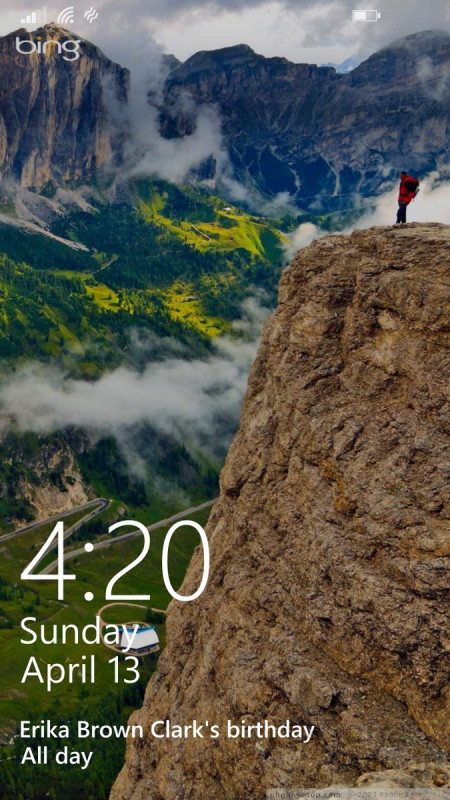



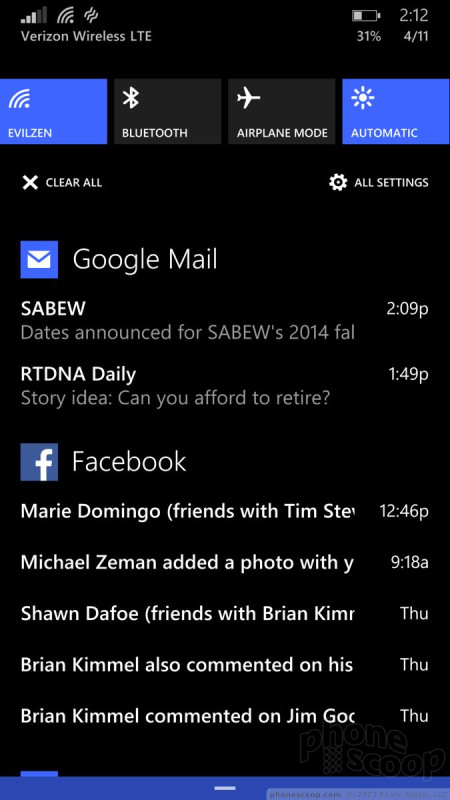



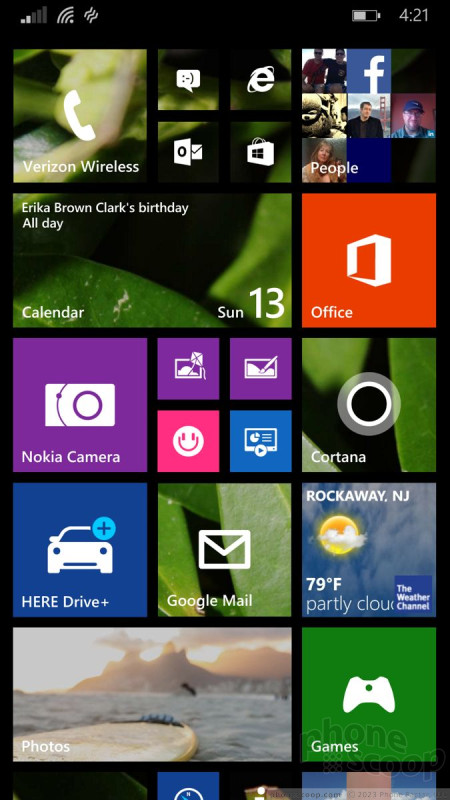




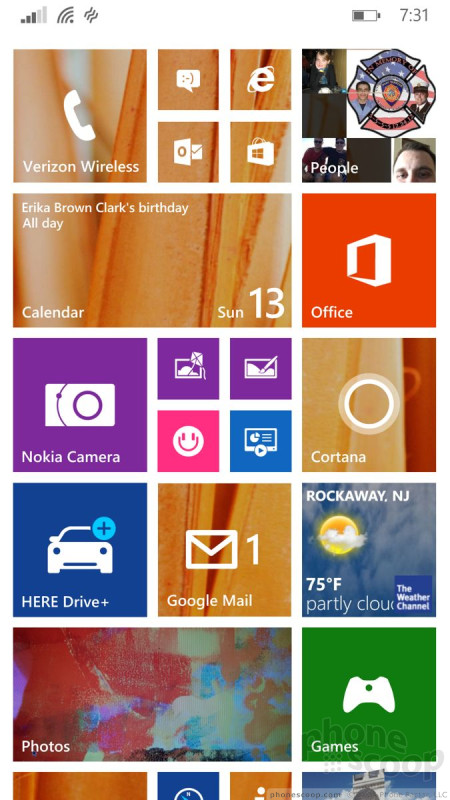





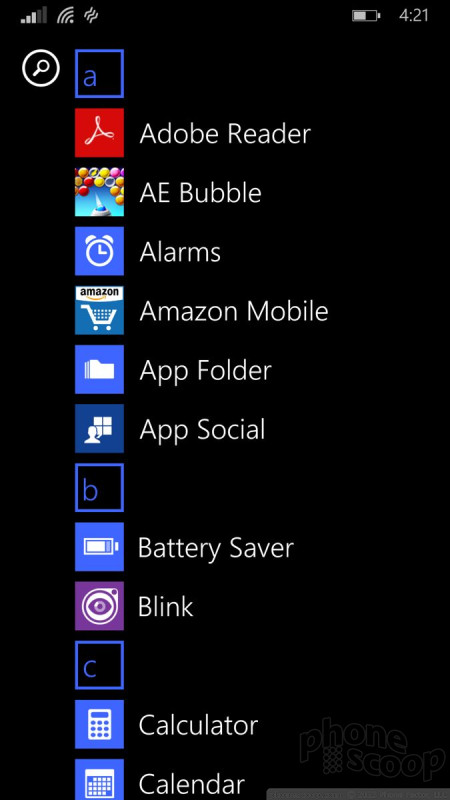



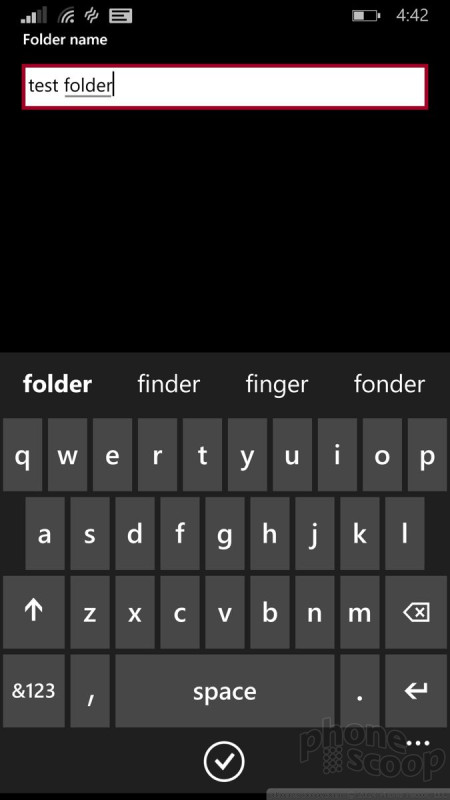






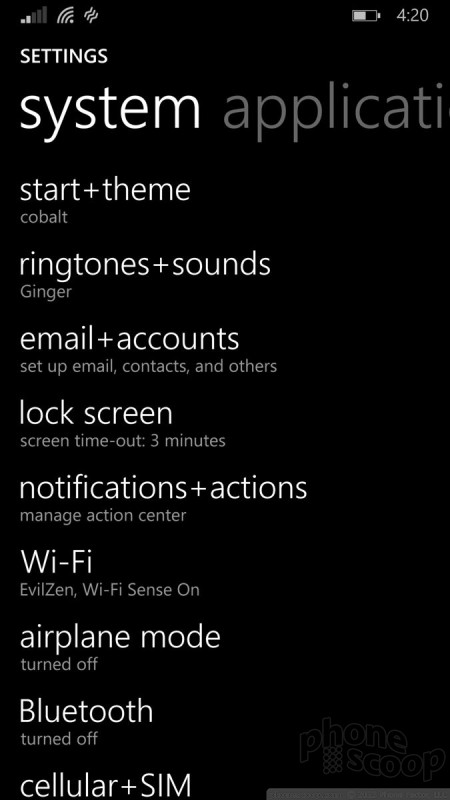










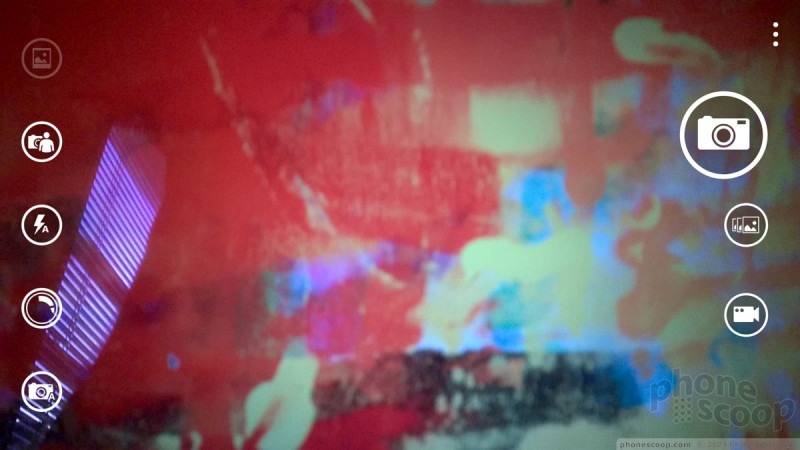








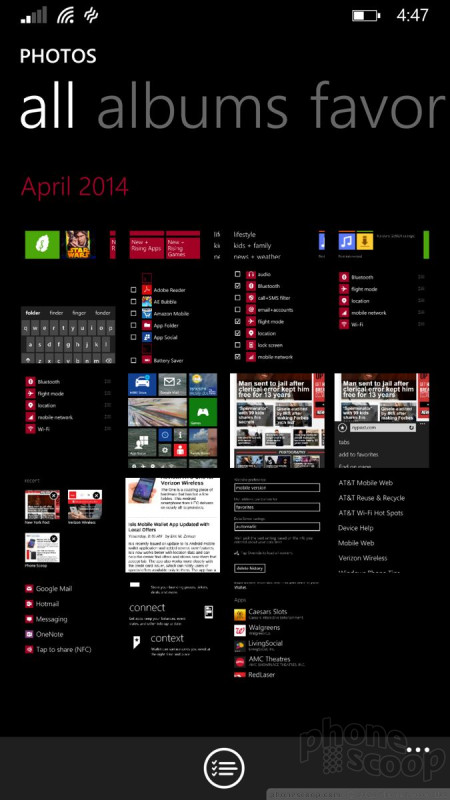






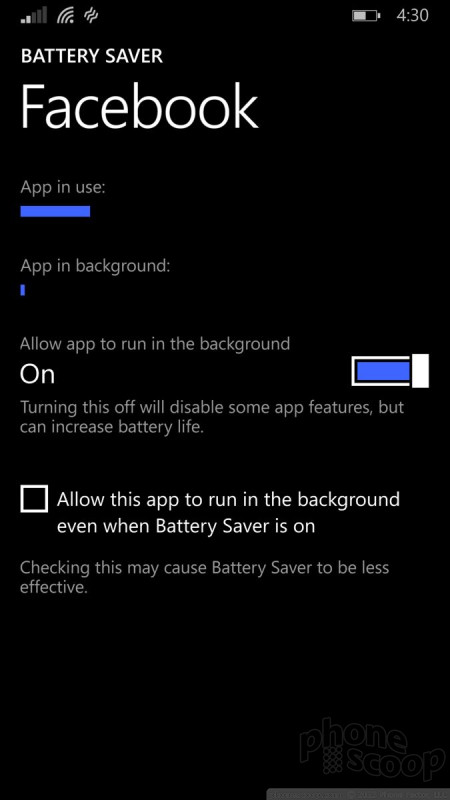


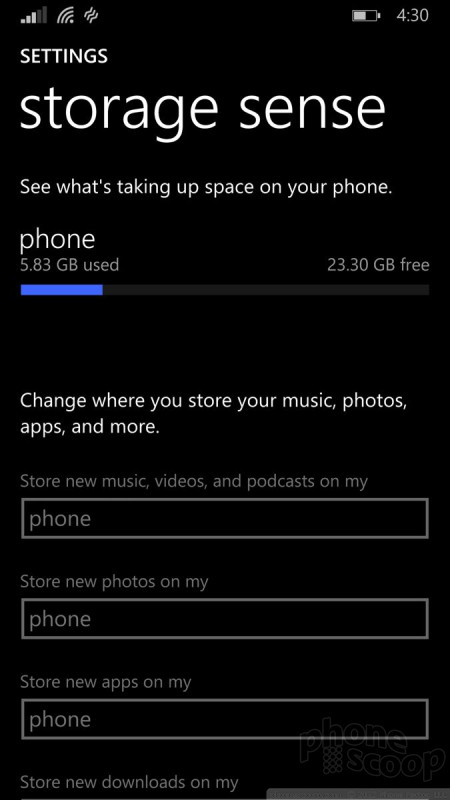







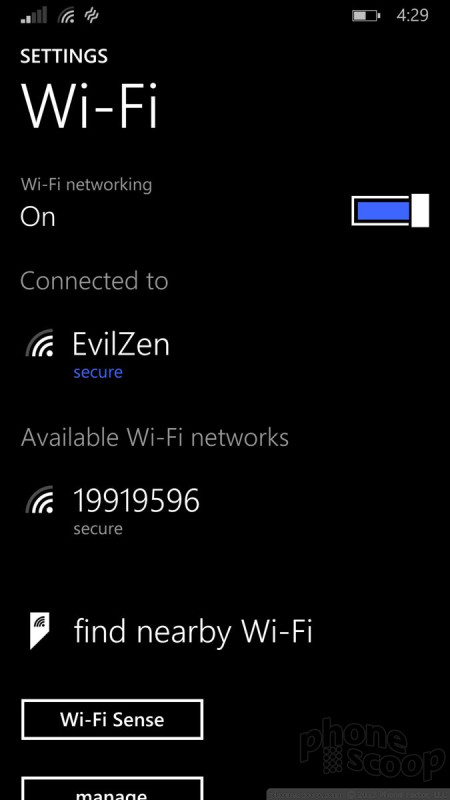










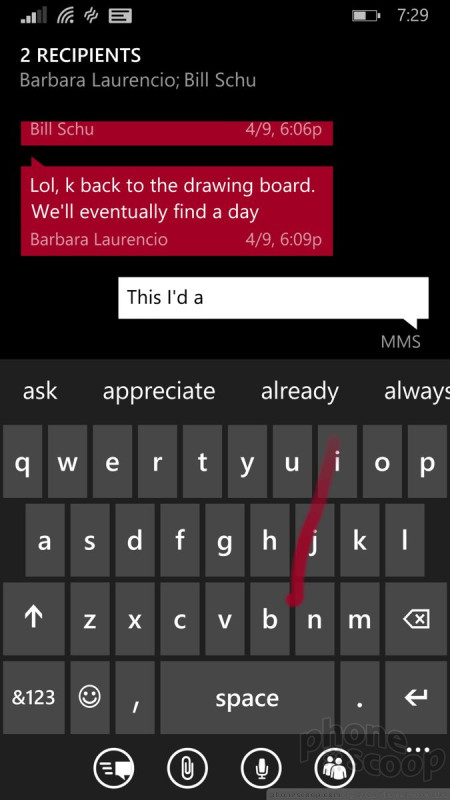



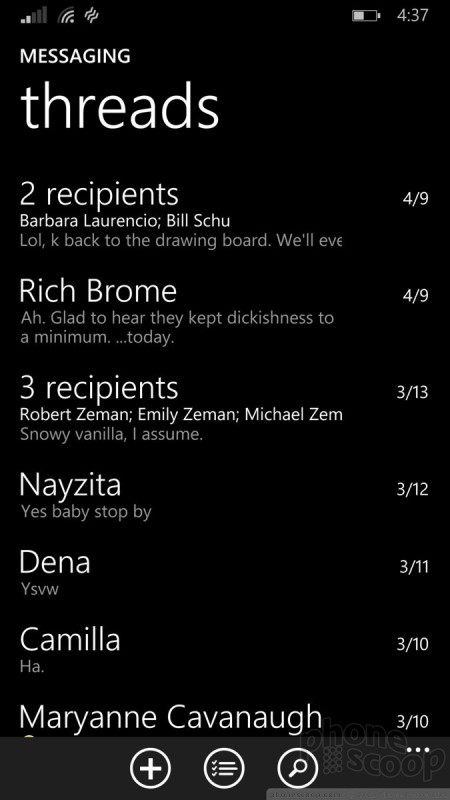






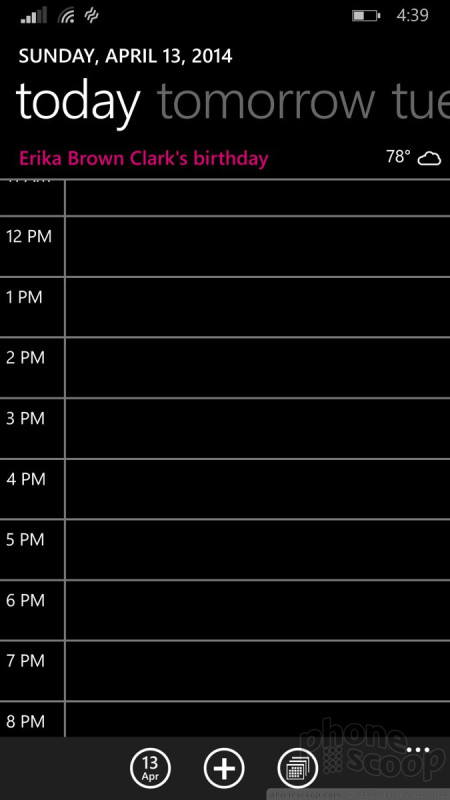





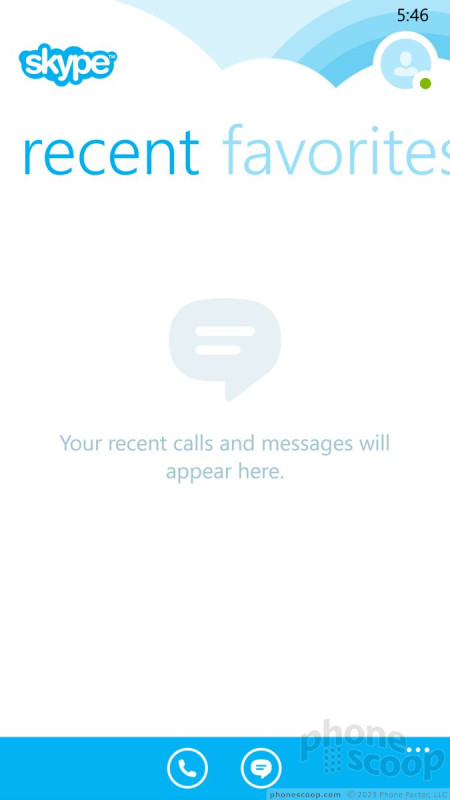





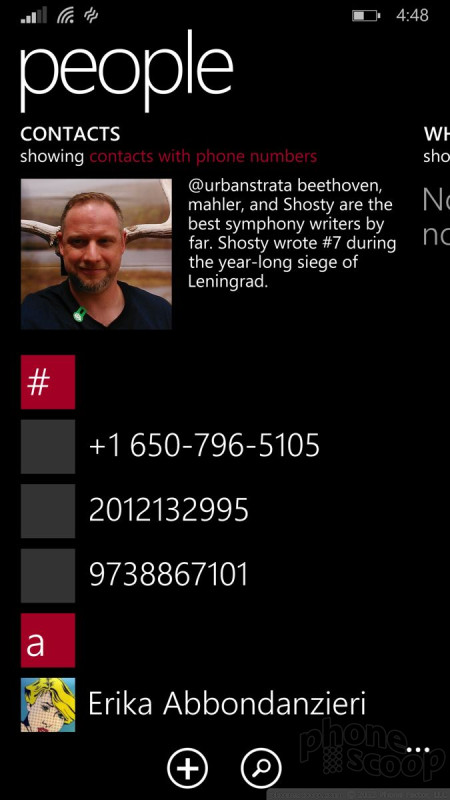








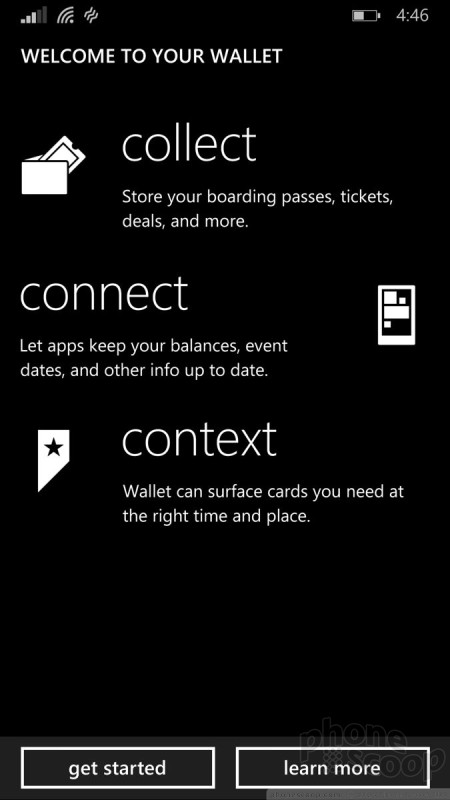





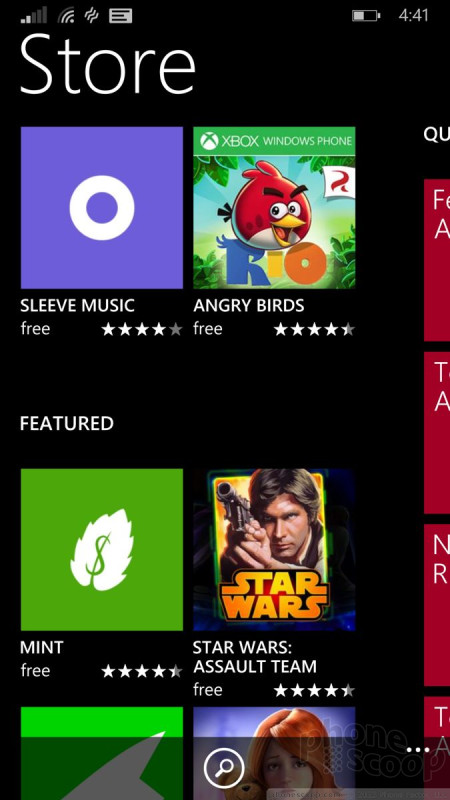




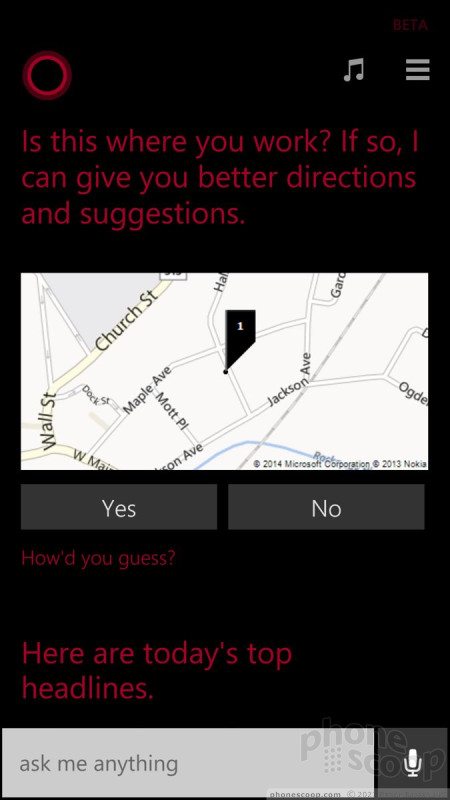












 iPhone 15 Series Goes All-In on USB-C and Dynamic Island
iPhone 15 Series Goes All-In on USB-C and Dynamic Island
 Samsung S24 Series Adds More AI, Updates the Hardware
Samsung S24 Series Adds More AI, Updates the Hardware
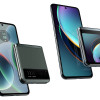 Motorola Gets Serious About Foldables with New RAZR Lineup
Motorola Gets Serious About Foldables with New RAZR Lineup
 Samsung's New Foldables Stick to the Formula
Samsung's New Foldables Stick to the Formula
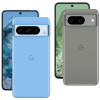 Google Pixel 8 Series Saves the Best for the Pro
Google Pixel 8 Series Saves the Best for the Pro









